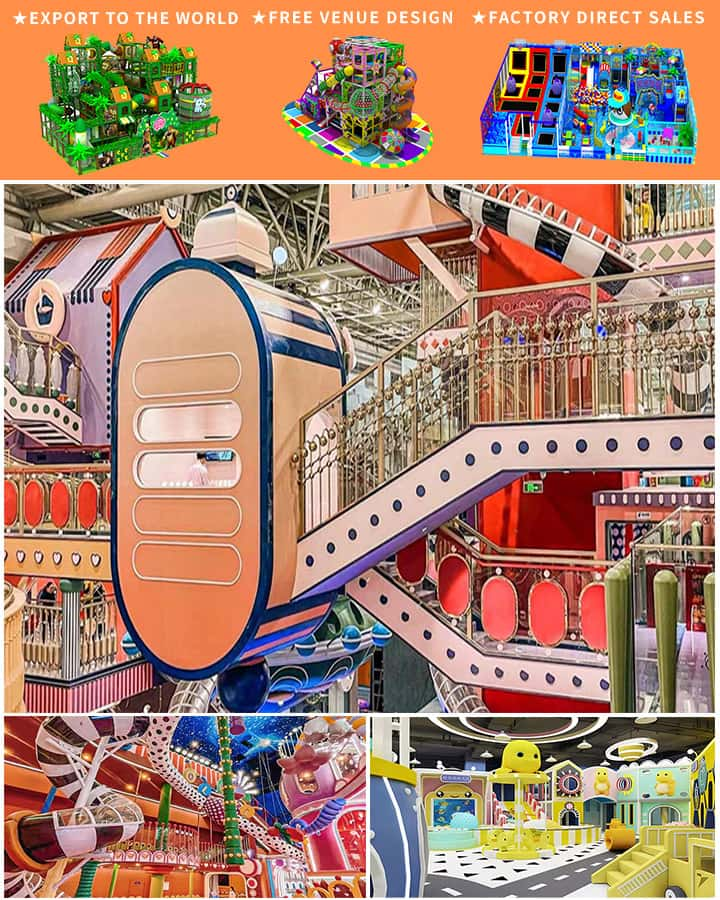Designing a small indoor playground can be a delightful and rewarding project that provides endless entertainment for children. Whether you’re setting up a play area in your own home, a community center, or a commercial space, careful planning and creative thinking are key to making the most of a limited area. Here’s how you can design an engaging and enjoyable indoor playground that caters to young adventurers.
1. Plan and Prioritize Features
Before diving into the design, it’s important to outline the primary goals and features you want to include. Consider the age group of the children who will use the playground. For toddlers, focus on soft and safe structures with plenty of floor space for crawling and playing. For older children, incorporate more challenging elements like slides, climbing walls, and interactive toys.
2. Maximize Vertical Space
When floor space is limited, think vertically! Install shelves, wall-mounted games, and elevated platforms to create multi-level play areas. Loft beds with built-in slides or reading nooks can also double as play spaces, saving room while providing functional furniture.
3. Choose Multi-Purpose Furniture
Invest in furniture that offers multiple uses. Foldable tables and chairs can be used for meals or arts and crafts, and then stowed away when not in use. Storage benches provide seating and a place to keep toys organized. Think about modular furniture pieces that can be rearranged to suit different activities.

4. Incorporate Educational Elements
A well-designed indoor playground should not only be fun but also educational. Include elements like puzzle boards, alphabet walls, number games, and themed zones (such as a mini science lab or art station) that encourage learning through play. These activities can stimulate creativity, problem-solving skills, and motor development.
5. Use Bright Colors and Engaging Patterns
Colors have a significant impact on children’s mood and behavior. Choose vibrant and cheerful hues to make the space inviting and stimulating. Wall decals, colorful rugs, and patterned wallpapers can create a dynamic environment that inspires imagination and excitement.
6. Safety First
Safety is paramount in any playground design. Ensure all equipment is age-appropriate and meets safety standards. Use non-toxic materials, rounded edges, and soft flooring like foam mats or rubber tiles to cushion falls. Regularly check for wear and tear to maintain a secure environment.
7. Create Themed Play Areas
Themed areas can make a small indoor playground feel larger and more immersive. Whether it’s a pirate ship, fairy garden, or jungle safari, themed zones add a sense of adventure and can transport children to different worlds. Use decorations, costumes, and props to enhance the experience.
8. Integrate Natural Elements
Bringing in natural elements such as potted plants, wooden toys, and stone decorations can create a balanced and soothing atmosphere. Plants not only add beauty but also improve air quality, making the space healthier for kids.
9. Flexible Lighting Solutions
Good lighting is essential for both safety and ambiance. Use adjustable lighting to create different moods—bright lights for active play and softer lights for quieter activities like reading or nap time. Consider incorporating some fun lighting features like string lights or color-changing bulbs to add a whimsical touch.
10. Engage the Kids in the Design Process
Finally, involve the children in the design process. Ask for their input on colors, themes, and preferred activities. This not only ensures the playground meets their needs but also makes them feel ownership and excitement about their new play space.
By thoughtfully incorporating these design strategies, you can transform even the smallest indoor space into an exciting and enriching playground. With a blend of creativity, functionality, and a touch of whimsy, you can create a haven where children’s imaginations can soar and their spirits can thrive.




